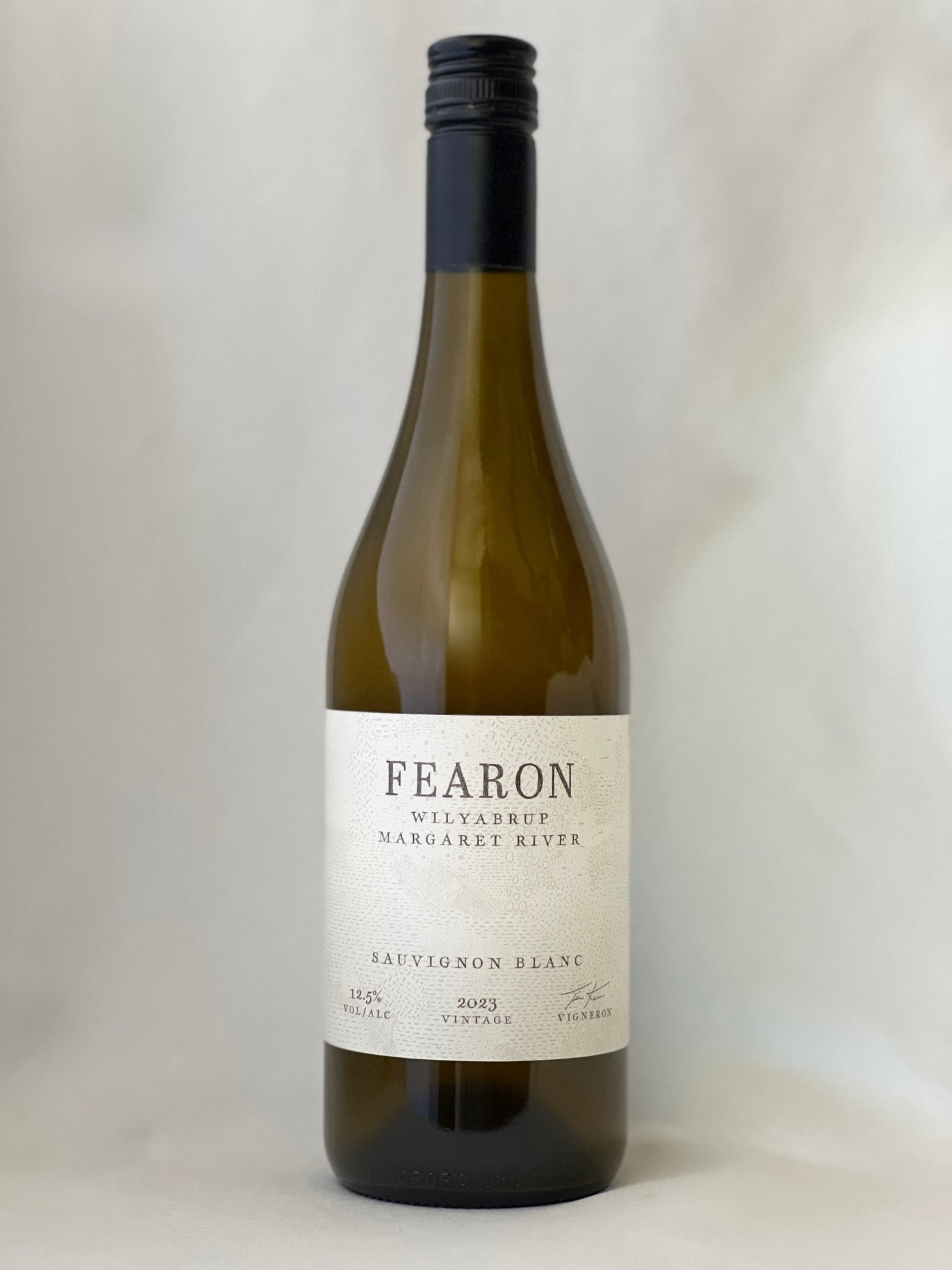2024 Fearon Chardonnay

Region: Ferguson Valley, Geographe
Alcohol: 13%
Tasting Notes: fleshy grapefruit, juicy Meyer lemons, lanolin, beeswax
Pairing: mild creamy cheeses like brie, roast chicken, apple tart
Tasting Notes
Tim makes no secret of his love for Chardonnay - specifically the Gingin clone of Chardonnay, one of Western Australia’s unique heritage grapevine clones found only within the state. This wine is intended to pay tribute to the hallmark characteristics of great Gingin clone Chardonnay, with immense concentration and power of fruit flavour, a firm and textural acid structure, and the ability to seamlessly integrate high quality oak character. White grapefruit and stone-fruit blossom immediately greet and fill out the nose; evolving in glass to reveal more exotic and savoury aromas of preserved lemon, beeswax, and lanolin. Toasted cashew and biscuity ginger oak character fill out a heady bouquet. The powerful citrus core of fleshy grapefruit and juicy Meyer lemon fills every corner of the palate, building to an incredible breadth and intensity of flavour. An electric undercurrent of zesty lime acidity provides a pithy texture, razor sharp structure and endless length. Careful use of quality French oak complements the acid structure, builds palate weight and adds subtle toast and spice to the fruit flavours.
This wine will begin to show its true potential in 2-3 years and will continue to age gracefully for 10 years or more. Best decanted when young.
Vineyard
The fruit was sourced from 27-year-old Gingin clone vines in the Talisman vineyard, located in the Ferguson Valley sub-region of Geographe. The Talisman vineyard is located near the headwaters of the Ferguson catchment, planted across parallel broad valleys and intervening ridgelines, utilising all available aspects and slopes. The Chardonnay is planted towards the bottom of one of these valleys, on a moderate slope with a westerly aspect. The region’s underlying granite bedrock is visible via extruding boulders towards the top of the block. Being the most inland vineyard in the Ferguson Valley sub-region, the micro-climate has a continental influence, consequently experiencing one of the longest growing seasons in the Geographe wine region. Combined with the deep and well drained dark loamy soils, the Talisman vineyard is recognised as one of the premier sites in Geographe, the Chardonnay in particular is recognised for consistent quality and distinction.
Winemaking
Fruit was hand harvested on the morning of 3rd February 2024, then transported to the winery and chilled overnight. The following day the fruit was destemmed into a basket press, then gently pressed over several hours. The free-run juice was transferred directly to a mixture of new (50%) and seasoned French oak barriques, allowing the pressings to settle overnight then transferred to their own seasoned French oak barrique. Wild fermentation was allowed to proceed, with primary fermentation completed around 20 days later. The barrels were then topped, moved into a cool-room and stirred periodically for six weeks. No malolactic fermentation was allowed to proceed, with sulphur being added 10 weeks post-fermentation. The wine spent a further seven months maturing in oak, during which time they were stirred and topped periodically. In November, the wine was racked out of oak and blended into tank, and allowed to rest on fine lees for an additional three months. After this, the wine was racked and bottled in February 2025, with no fining or filtration. As a result, a fine sediment may remain in bottle.
Season
The 2024 vintage will go down as one of the earliest, hottest and most compressed harvests in the viticultural history of southwest WA. A drier than average winter saw a slightly earlier than usual budburst, and the spring of 2023 was one of the driest and warmest on record. Early shoot growth was rapid, bringing forward further phenological milestones. Soil moisture deficiency affected flowering and fruit set, reducing yields somewhat. Irrigation was necessary from the end of spring through summer to maintain vine condition. Veraison was early and subsequent ripening rapid across all varieties, hastened by the recurrent heatwave conditions across January and February. One silver lining is the very low disease pressure, and abundant Marri tree flowering ensuring little bird pressure. White varieties fared well, with very early harvesting ensuring retention of natural acidity. Red varieties were exposed to the most intense of the several heatwaves that occurred during February, as a result reaching sugar ripeness far in advance of tannin (skin & seed) ripeness. All in all, a difficult growing season that perhaps gave a glimpse into more regular conditions under a warming global climate, and highlighted just how important selecting the appropriate varieties and planting sites will be to adapt to future conditions. The wines produced were very good, and with the earlier harvest dates will suit early-release and approachability.


